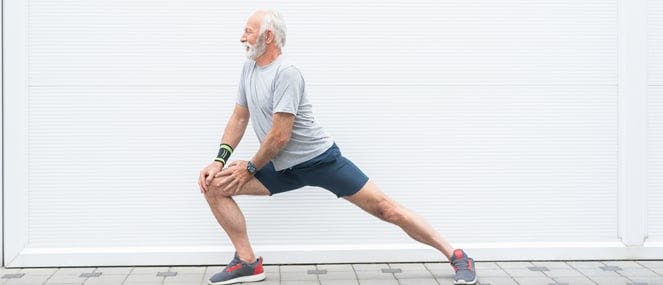
- Health hub/
- Arthritis, joint, bone & muscle/
- Plantar Fasciitis – heel pain


Plantar Fasciitis is a condition of tissue irritation and pain at the attachment of the plantar fascia onto the underside of the calcaneus (heel bone).
The plantar fascia is a fibrous band of connective tissue between the calcaneus (heel bone) and the base of the toes
The plantar fascia plays an important role in normal foot biomechanics during weight bearing activities.
During gait, while the foot is on the floor, the plantar fascia is continually elongating. As you push off through the toes, the plantar fascia tenses and causes the arch of the foot to elevate, a phenomenon known as the Windlass Effect. It is believed that this spring-like behaviour helps with efficiency of movement.
If the plantar fascia becomes inflamed it can cause heel pain.
Symptoms
- Pain and discomfort in the heel, more common on the inside aspect of the heel bone.
- Quite often painful with the first few steps in the morning or getting up and weight bearing after sitting for prolonged periods (e.g travelling in a car).
- May not be painful during exercise, but will likely be aggravated following exercise or prolonged standing.
- Mild swelling may be present.
Risk Factors
- Participation in activities with large amounts of foot impact or prolonged weight bearing (i.e. running, aerobics, gymnastics, fast bowling).
- Increased weight (obesity, pregnancy) can add to greater stresses put through the plantar fascia and lead to irritation and break down of the tissue.
- Most common in individuals aged 40-60 years, and is more common in women than in men.
- Problems with the arch of the foot. Feet with high arches often have a tight plantar fascia; feet with low arches may have less shock absorption.
- Biomechanical faults at the lower back, hip and knee may alter gait pattern and put excessive strain on the plantar fascia.
- Poorly fitting or designed shoes.
How to treat plantar fasciitis
- Rest from activities that aggravate symptoms. It may be ok to continue with some non-weight bearing fitness (e.g. swimming, cycling or upper body work-outs).
- Ice treatment such as ice cube massage or freezing a bottle of water and gently massaging the area for 10 minutes, several times a day.
- Strapping of the foot can sometimes provide excellent relief of symptoms by off-loading the plantar fascia.
- Wear sensible shoes that have good shock absorption capabilities and provide the right support for your foot type.
- Physiotherapy guided program to stretch the plantar fascia, strengthen supporting muscles around the foot and assist correct other biomechanical abnormalities.
Return to sport
- Follow the advice given by your health professional.
- Gradually reintroduce sport and monitor levels of pain closely. Do not progress your rehabilitation if you feel pain.
- Strapping of the foot can initially be used as a preventative measure.
- Ice for 10 minutes following each session in the initial few weeks following injury.
~This article first appeared on Sydney Sports and Orthopaedic Physiotherapy~
Sydney Sports and Orthopaedic Physiotherapy was established in 2007 with the aim to provide a high quality service in injury rehabilitation using state-of-the art technology in an innovative environment.
Their team of highly qualified and caring physios, led by founder and Managing Director Brad McIntosh, can do a running analysis and provide advice & assessment for the very best outcome. Call them on (02) 9252 5770 for more information, or visit their website http://sydneyphysiosolutions.com.au/
Brad and the SSOP team are also our injury prevention experts for the Blackmores Sydney Running Festival so send them your questions at Ask a Physio and they’ll help you achieve your goals and get you over the finish line!




